Komodo Dragon - Definition, Examples, Quiz, FAQ, Trivia
Discover the world's largest living lizard and how it survives in the wild
What is a Komodo Dragon?
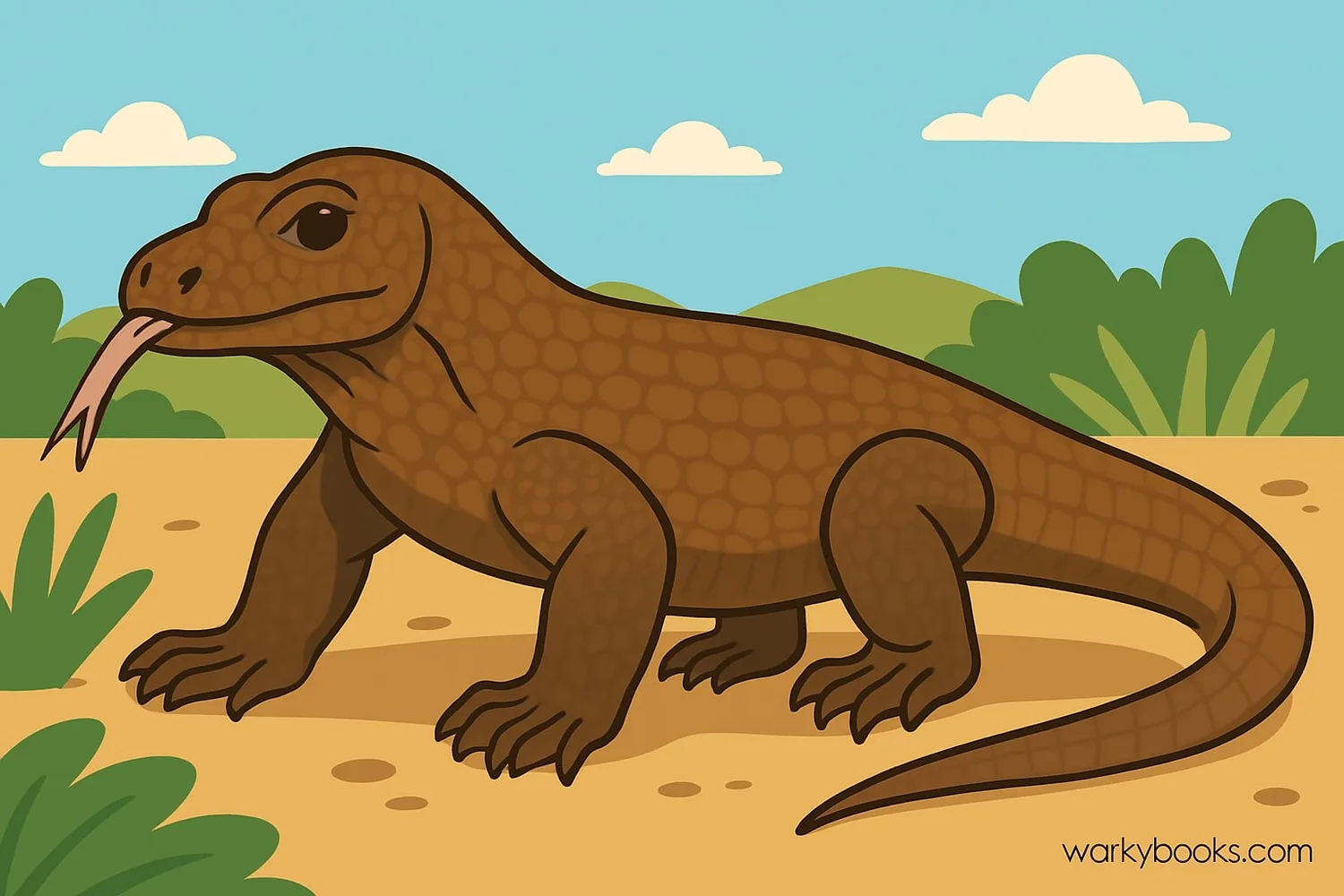
The Komodo dragon is the world's largest living lizard. Its scientific name is Varanus komodoensis. These amazing reptiles can grow up to 10 feet long and weigh over 150 pounds! They are powerful predators that have lived on Earth for millions of years.
Komodo dragons are carnivores, which means they eat meat. They have excellent senses of smell and can detect food from miles away using their forked tongues. These lizards are also excellent swimmers and can move surprisingly fast when they need to.
Did You Know?
Komodo dragons can live up to 30 years in the wild! That's longer than many other reptiles.
Where Do Komodo Dragons Live?
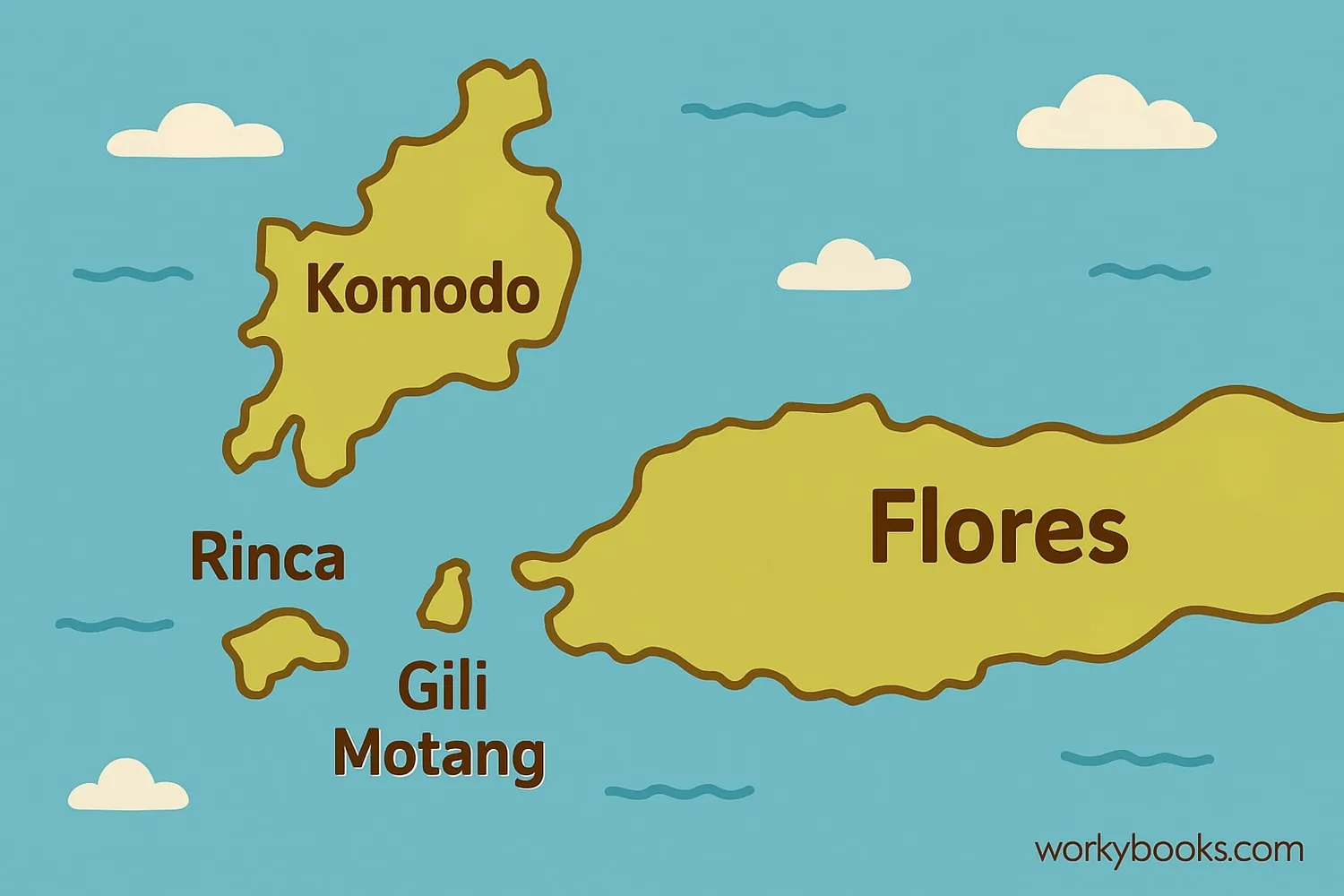
Komodo dragons are found only in a few places in the world. They live on several Indonesian islands, including:
Komodo Island
Where they were first discovered and studied
Rinca Island
Home to a large population of Komodo dragons
Flores Island
Western coastal regions provide suitable habitat
These islands have a tropical savanna climate with distinct wet and dry seasons. Komodo dragons can be found in forests, savannas, and along beaches. Much of their habitat is protected within Komodo National Park, which was established to help conserve these amazing creatures.
How Big Do Komodo Dragons Get?
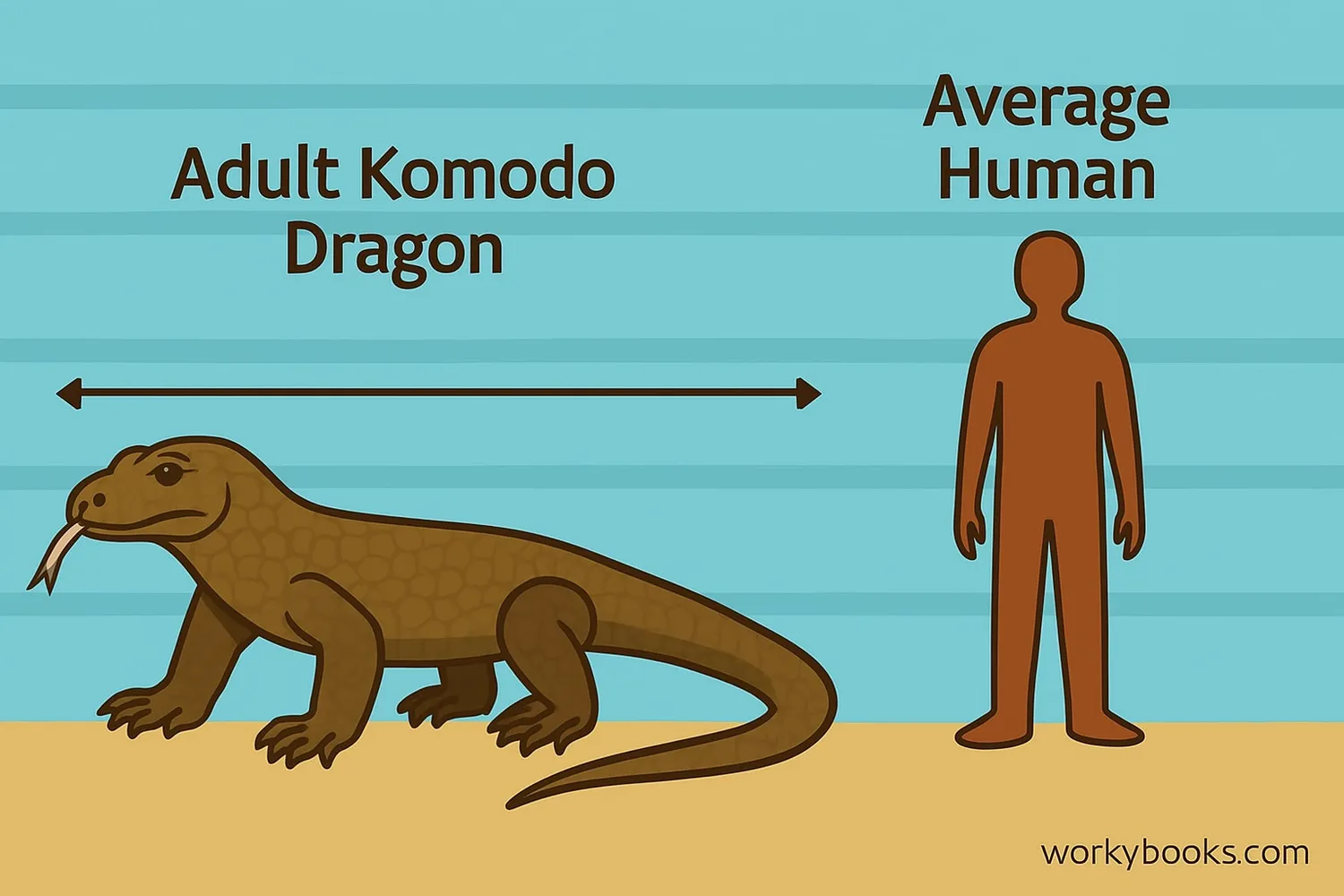
Komodo dragons are truly impressive in size:
Length
Adults typically 6.5-10 feet (2-3 meters) long
Weight
Males: 150-200 pounds (70-90 kg)
Females: 130-150 pounds (60-70 kg)
Speed
Can run up to 12 mph (20 km/h) in short bursts
Their large size helps them dominate their island habitats. Komodo dragons have:
• Strong legs with sharp claws for digging and climbing
• A long, muscular tail that can be used as a weapon
• Tough, scaly skin that acts as natural armor
• A forked tongue that helps them smell their environment
• About 60 sharp, serrated teeth that can grow up to 1 inch long
What Do Komodo Dragons Eat?
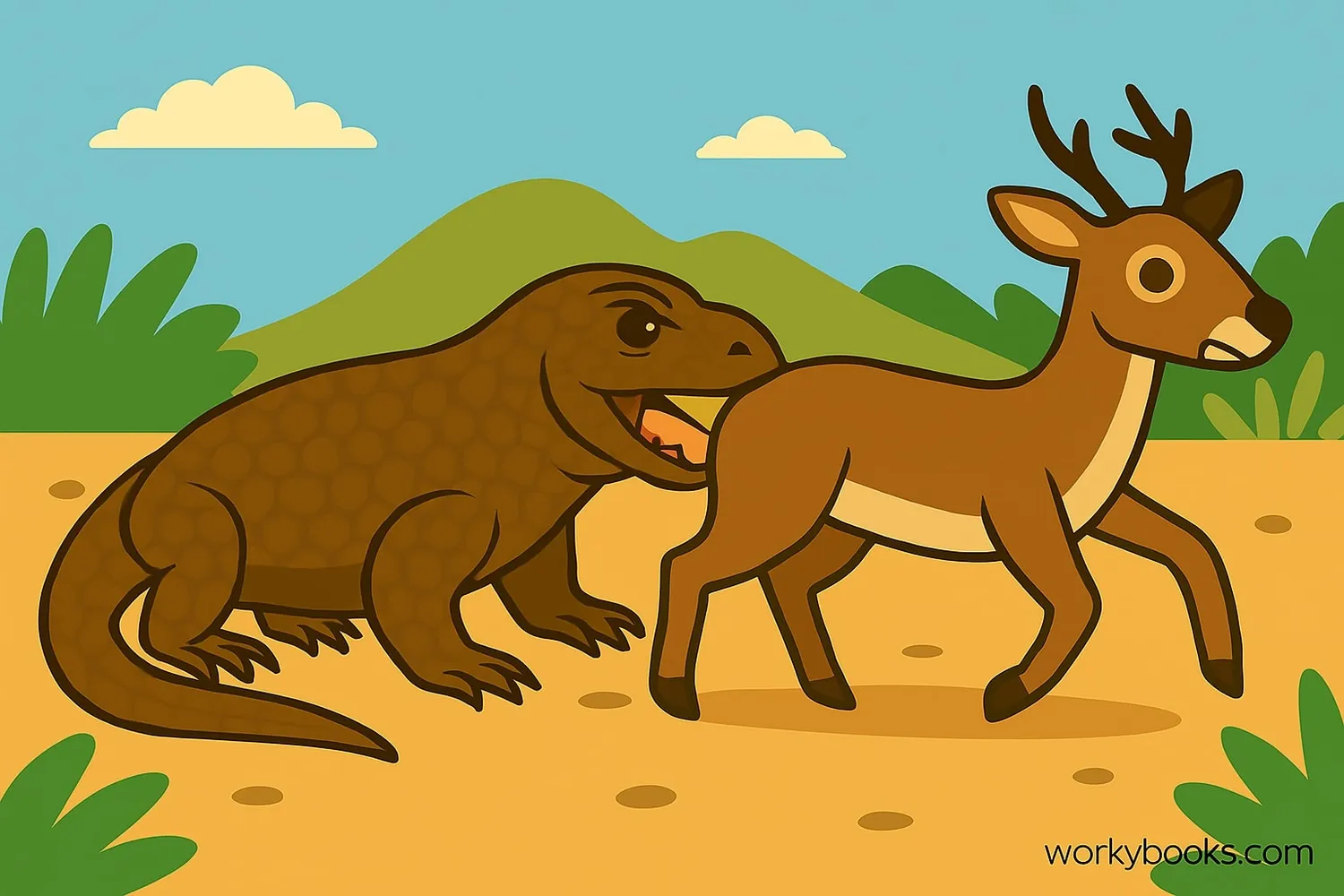
Komodo dragons are top predators in their environment. Their diet includes:
Large Animals
Deer, wild boar, water buffalo
Smaller Prey
Birds, snakes, fish, and insects
Other Food
Eggs and occasionally smaller Komodo dragons
Komodo dragons are ambush predators. They wait patiently for prey to come close, then attack with surprising speed. Their hunting strategy is unique:
1. They deliver a powerful bite with their sharp teeth
2. Their venom prevents blood from clotting
3. They follow the injured animal for miles as it weakens
4. They use their excellent sense of smell to locate the dying animal
Komodo dragons can eat up to 80% of their body weight in a single meal! After such a large meal, they may not need to eat again for a month.
Are Komodo Dragons Dangerous?
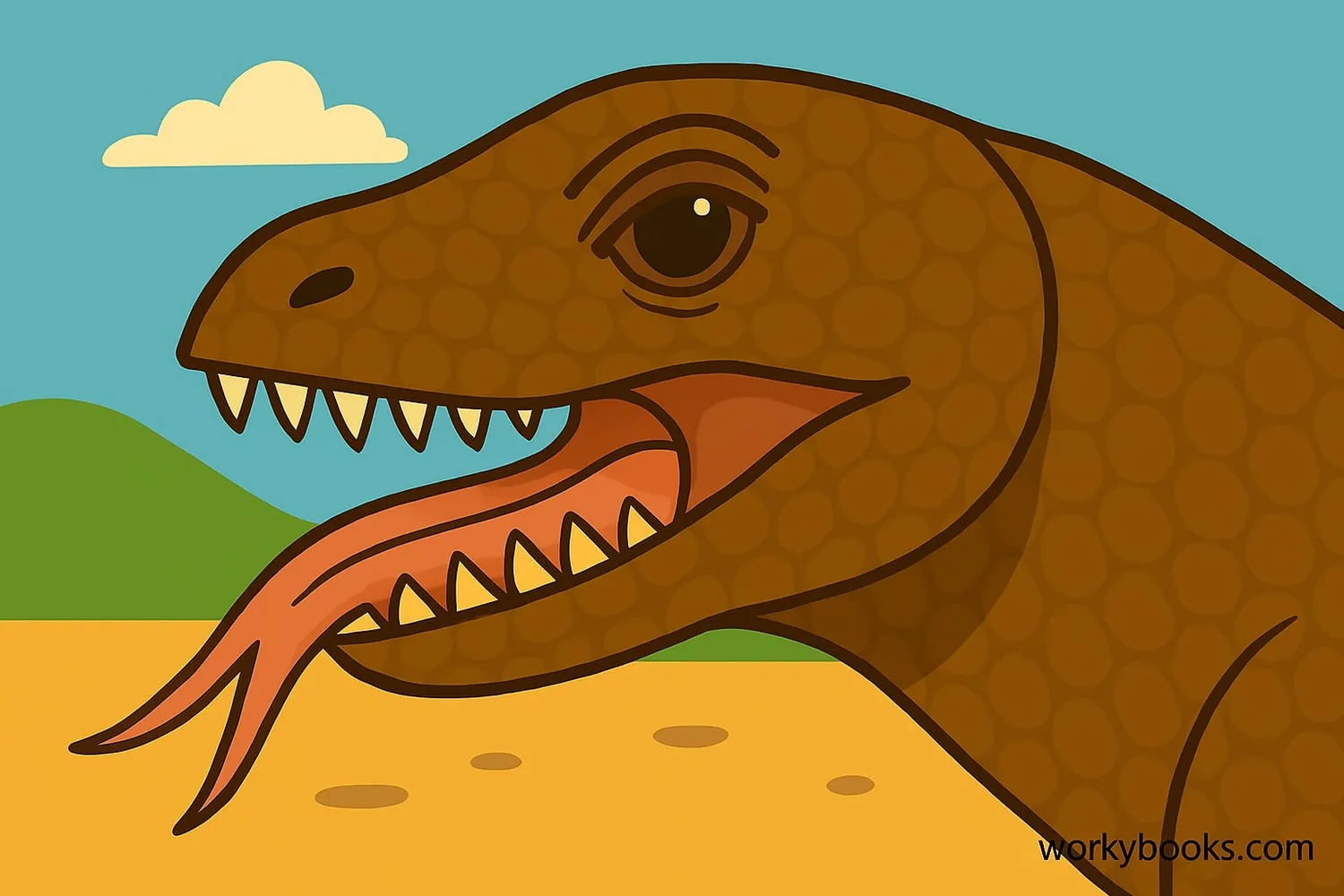
Komodo dragons are potentially dangerous to both animals and humans. Here's why:
Powerful Bite
Sharp teeth can cause serious injuries
Venom
Special glands produce toxic venom
Bacteria
Saliva contains harmful bacteria
Strength
Powerful legs and tail for attacking
Komodo dragons have a venomous bite that:
• Prevents blood from clotting
• Causes shock and lowers blood pressure
• Makes prey weak and unable to escape
While attacks on humans are rare, they can happen. That's why it's important to visit Komodo dragons only with experienced guides in protected areas. These amazing reptiles are protected by law, and it's illegal to harm them.
Safety First
Komodo dragons can be dangerous, but attacks on humans are rare. Always observe them from a safe distance with a trained guide.
Komodo Dragon Conservation
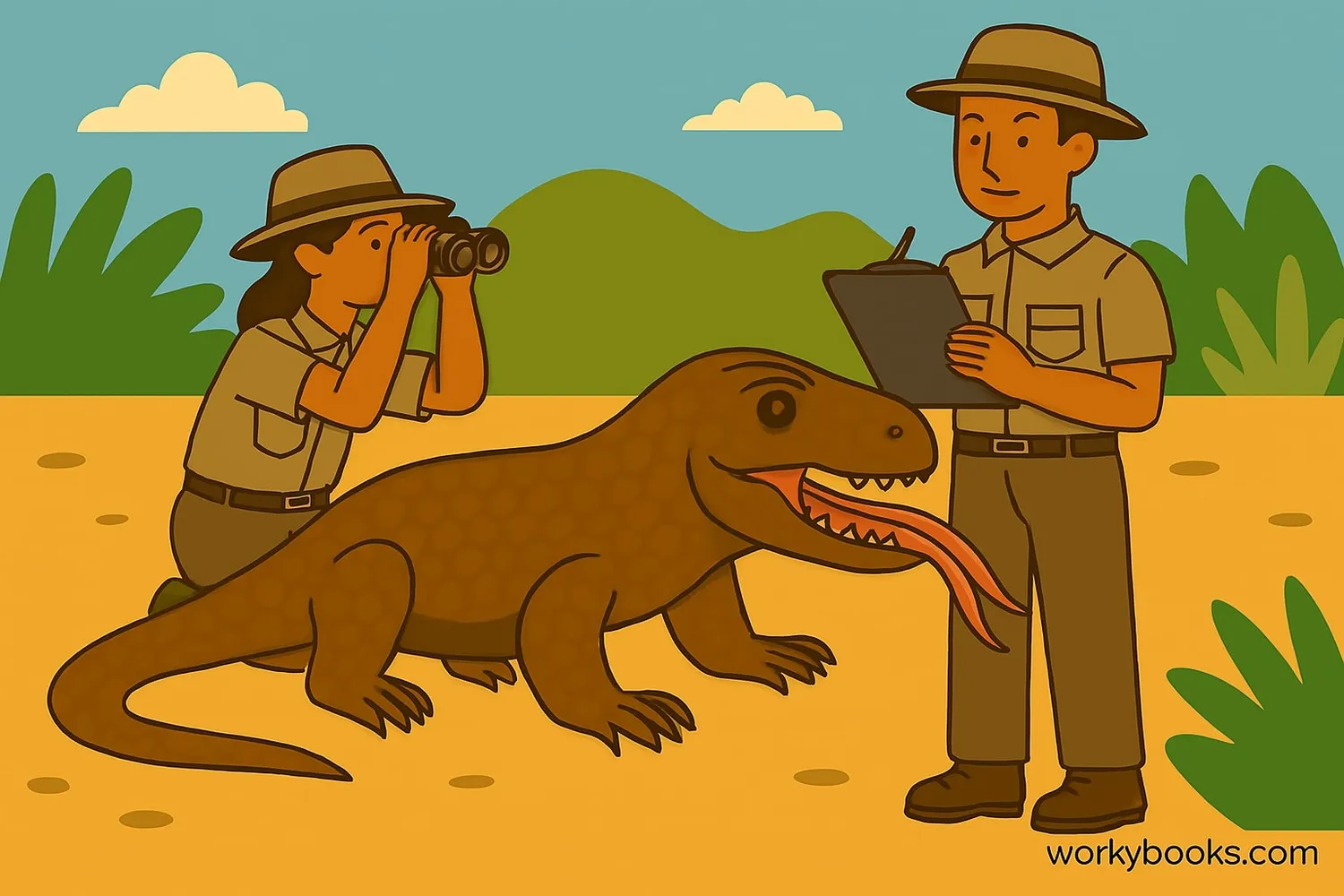
Komodo dragons are classified as Endangered by the International Union for Conservation of Nature (IUCN). There are only about 1,400 mature adults left in the wild. Several factors threaten their survival:
Habitat Loss
Human development reduces their living space
Natural Disasters
Volcanic activity and earthquakes affect islands
Prey Reduction
Decreasing numbers of deer and other prey animals
Conservation efforts include:
• Komodo National Park - Established in 1980 to protect dragons and their habitat
• Anti-poaching patrols - Rangers protect against illegal hunting
• Scientific research - Studying dragons to better protect them
• Community education - Teaching locals and visitors about conservation
The future of Komodo dragons depends on continued conservation efforts and responsible tourism. When visiting their habitat, always follow park rules and respect these amazing creatures.
Komodo Dragon Quiz
Test your knowledge about Komodo dragons with this quiz! Answer all 5 questions to see how much you've learned.
Frequently Asked Questions
Here are answers to some common questions about Komodo dragons:
Komodo Dragon Trivia
Discover some amazing facts about Komodo dragons!
Western Discovery
Komodo dragons were unknown to western scientists until 1910! A Dutch colonial administrator heard stories of "land crocodiles" and went to investigate.
Super Sniffers
Komodo dragons can detect scents from up to 6 miles away! Their forked tongues collect airborne particles which they "taste" using a special organ in their mouth.
Growing Up
Baby Komodo dragons are only about 12 inches long when they hatch. They grow about 1-2 feet per year for the first few years of their life.
Big Eaters
A Komodo dragon can eat up to 80% of its body weight in a single meal! After such a feast, they may not need to eat again for a month.


